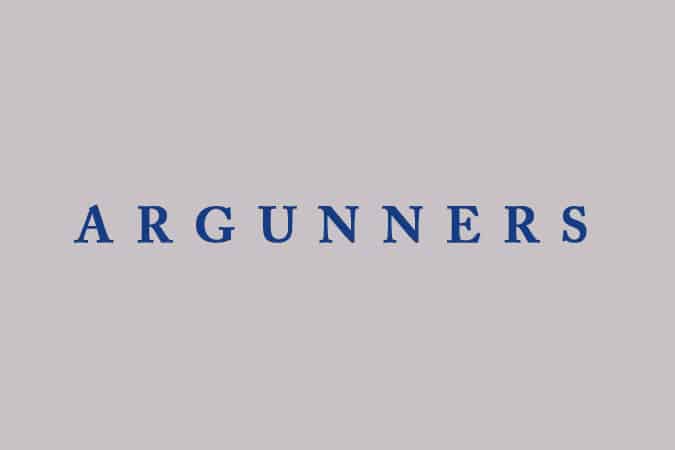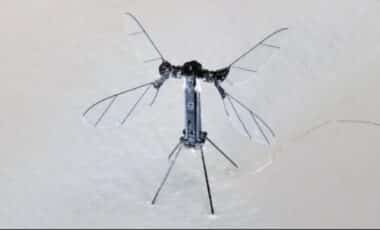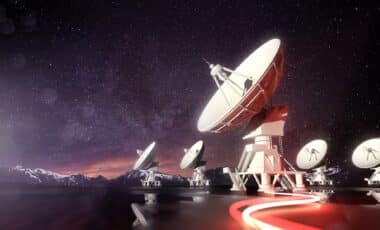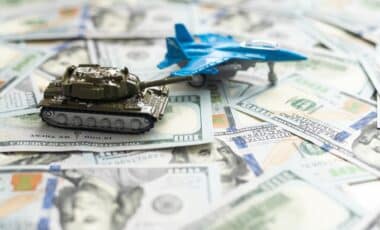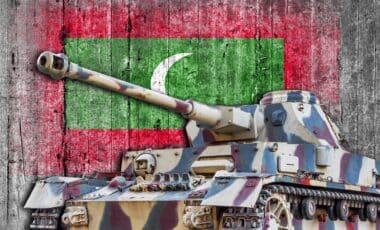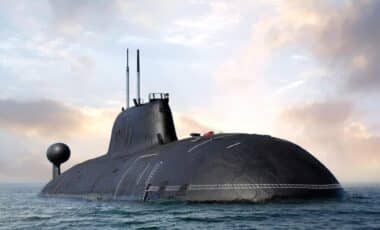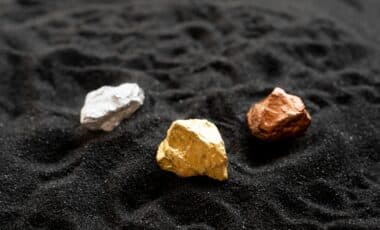World War II saw stiff competition among combatants in the design of fighter planes as they sought to outdo each other in performance and ultimately defeat each other. Fighter plane designs progressed steadily during this time. In this article, let us look back in time and discover the 8 best WW2 Fighter Planes.
At the start of the war, most planes were piston-driven, but by the end, jets entered service, and some had state-of-art technology by the standards of advancement at the time. They had more powerful engines, and their speeds and performance increased over time.
While most jet fighter planes went out of service at the end of the war or within a decade afterward, a few were developed into more sophisticated fighter aircraft or commercial aircraft. Nevertheless, fighter planes remain some of the most iconic WWII aircraft.
Below is a look at eight top choices for the best WW2 fighter plane.
8 Best WW2 Fighter Planes
P51 Mustang

- Country – U.S
- Type: Fighter bomber
- Years of service: 1940 – 1984
The P 51 Mustang is a fighter bomber used in the Korean War and World War II. It is an American long-range, single-seater plane.
It was designed in April 1940 by a team led by James Kindleberger at North America Aviation (NAA). The British Purchasing Commission commissioned the plane, and they manufactured 15,000 units.
The first model had an Allison V-1710 engine which was decent but limited at flying higher altitudes. Later models, B, and C, were fitted with Rolls Royce Merlin engines that performed excellently even in higher altitudes (15,000+ feet).
The final model, the P-51D, saw the Rolls Royce Merlin engine replaced by the Packard V-1650-7. It also had six .50 caliber M2 machine guns and was considered the top fighter aircraft during World War II. It was super-fast and maneuverable. It also offered excellent visibility and high speeds of up to 437mph.
This plane mainly escorted bombers in raids during World War II and the Pacific War against the Japanese. Although the invention of fighter jets saw the elimination of earlier models of fighter jets, the P51 Mustang remained in service until the 1980s.
Best WW2 Fighter Planes: Soviet Yakovlev Yak-3

- Country – Russia
- Type: Dogfighter
- Years of service: 1943 – 1952
Yakovlev Yak-3 was a World War II Soviet fighter. It was preferred among novice and seasoned pilots as it was easy to fly and maintain and was one of the lightest and smallest fighters during the war. Despite its compact size, it was a powerful and excellent performing fighter plane.
It was designed in 1941 as a successor of the 1-30 prototype and the I-26 (Yak-1). It maintained some features of the Yak-1, such as the 20mm cannon firing, ShVAK cannon on each wing, and twin 7.62mm ShKAS machine guns.
It had a high power-to-weight ratio making it a formidable dogfighter. Some top pilots considered it more powerful than the P-51D Mustang and the Supermarine Spitfire. It competed well against the German fighter as it had a high firepower and energy retention.
Various versions of the Yak-3 were built by mid-1946 including the Yak-3 (VK-107A), Yak-3 (VK-108), YAK-3K, YAK-3P, YAK-3PD, YAK-3RD, YAK-3T, YAK-3T-57, YAK-3TK, YAK-3U, and YAK-3UTI.
Aside from the Soviet Air Force, it was also flown by the SFR Yugoslav Air Force, the Polish Air Forces, and the French Normandie- Niemen squadron post World War II.
Mitsubishi A6M Zero

- Country – Japan
- Type: Dogfighter
- Years of service: 1939 – 1945
The Mitsubishi A6M Zero, also known as the Navy Point 0 carrier fighter, was operated by the Imperial Japanese Navy. The Mitsubishi Heavy Industries manufactured it as a long-range carrier-based fighter and also used it as a land-based fighter.
It was introduced in 1940 during World War II. The fighter plane posed a challenge to most American jet fighter planes as only a few would survive its turning and twisting stunts. Earlier in the war, people considered it an outstanding dogfighter with a 12:1 kill ratio. By the mid-1942, there had been advancements in fighter plane designs that leveled the playing field for other planes. By 1944, most of the newer fighter plane models had surpassed the A6M’s speeds, maneuverability, firepower, and armor. As the war ended, the plane became outdated as a fighter aircraft. It was adapted for kamikaze operations. In total, there were 10,939 AGMs produced with 10 model variations.
Best WW2 Fighter Planes: Republic P-47D Thunderbolt

- Country – U.S
- Type: Fighter bomber
- Years of service: 1941 – 1945
The Thunderbolt was the largest single-engine piston fighter aircraft ever produced. Republic Aviation designed and manufactured it for the U.S Army Air Forces (USAAF), who primarily used it as fighter and fighter bomber aircraft.
Alexander Kartveli proposed the first design in 1940. The plane had a single-seat, low wing design and was a base fighter fitted with the Pratt & Whitney R-2800 twin-row radial, turbo-charged engine for high-altitude flying.
Getting the large engine fully functional took some time, and the aircraft first flew in June 1941. Production then commenced in March 1942. Still, shock waves posed a challenge on the plane during high-altitude dives. There were instances where the flight controls would lock or snatch. Eventually, they resolved the control issues, and the P-47 joined combat over Europe in April 1943.
Thunderbolts were the most produced American aircraft. By the end of World War II, a total of 15,683 units were produced. The final model, P-47D, had a maximum speed of 440mph with the capacity to fly in high altitudes of up to 40,000 feet.
It was also heavily armed with eight wing-mounted machine guns, a bomb load of up to 2,500 pounds, and a capacity to carry up to ten 5-inch rockets under the wings. The cockpit was well armored, and the radial engine proved to be remarkably resistant to damage. Its main downside was that it was out-climbed by the German Me 109s and Fw 190s in lower altitudes.
De Havilland Mosquito

- Country – Britain
- Type: Night fighter/ fighter bomber
- Years of service: 1940 – 1963
The de Havilland Mosquito was the fastest fighter bomber during World War II.
Its design was drawn from the high-speed DH88 Comet Racer and the streamlined DH91 Albatross airliners. The idea was to design a fighter aircraft that was so fast that it did not require advanced defensive equipment.
The British bomber aircraft was mainly adapted as a night fighter, hence the name mosquito. It had a twin-engine, two-seat, mid-wing design. One of its most outstanding features was its wooden “sandwich construction”. It used a frame of wood glued to the skin of plywood. Designed in 1938, it first entered service in 1941.
As a bomber, it carried up to 4,000 pounds of bomb load with a maximum speed was up to 400mph. It also had four .303-caliber machine guns and four 20-mm cannons that would fire through the nose.
A total of 7,780 aircraft had been built by the end of the war. It also served as a high-altitude fighter and photo-reconnaissance plane.
Avro Lancaster

- Country – Britain
- Type: Heavy bomber
- Years of service: 1941 – 1963
The Avro Lancaster was a British heavy bomber aircraft inspired by the Avro Manchester, a twin-engine medium bomber developed in the 1930s as a general use aircraft. The Lancaster had an upgrade for engine design. The earlier versions had Rolls Royce Merlins engine, and the later models had the Bristol Hercules engines.
It entered service in 1942 as a night-time bomber. As more units were produced, it became the main heavy bomber for RAF armies such as the Royal Canadian Airforce, Squadrons, European, and Commonwealth countries as it outperformed its predecessors the Halifax and Stirling. It was also an excellent precision bomber during the day.
The Lac, as it was colloquially known, delivered up to 608,612 tons of bombs. It carried the largest bomb loads with various models modified to carry up to 4000lb, 8000lb, and 12,000lb.
Later on, it became an engine testbed for the Metropolitan-Vickers F.2 turbojet. It took the role of a long-range anti-submarine patrol aircraft. It was also used as a patrol aircraft for aerial mapping and photo-reconnaissance and as a flying tanker.
After World War II, it was adopted as a transatlantic passenger and poster delivery airliner. It first flew as a scheduled commercial aircraft on March, 46 landing at the newly-built London Heathrow Airport.
Boeing B29 Superfortress

- Country – United States
- Type: Strategic/heavy bomber
- Years of service: 1943 – 1960
The Boeing B29 Superfortress is one of the most technologically advanced aircraft in World War II. It was primarily used as a long-range heavy bomber for firebombing and atomic bomb missions in Japan and was designed and produced by Boeing for the U.S in accordance with the Army Air Corps specifications of 1940.
The aircraft was driven by a four-engine propeller. It was designed for high altitude performance, but it also performed excellently in low altitude and high bombing. It was also one of the most expensive war aircraft with a design and production cost of $3 billion, an equivalent of $43 billion today.
It was also one of the largest World War II aircraft. It was fitted with state-of-art technology such as an analog computer-controlled fire system, pressurized cabin, and tricycle landing gear. It also had ten .50 caliber machine guns, a 20mm cannon, and four remote-controlled gun turrets. Its bomb load capacity was 10 tons, but the crew could load up to 14 tons.
Its advanced design allowed the flying fortress to stay relevant post World War II, through the 1950s. It was retired in the early 1960s, with 3,970 units built. The B29 and other Boeing war aircrafts laid a foundation for the design and production of Boeing trainers, reconnaissance, tankers, airlifters, and later, commercial airliners.
Lockheed P-38J Lightning

- Country – United States
- Type: Fighter, fighter bomber, aerial reconnaissance
- Years of service: 1939 – 1965
The Lockheed P-38J was an American fighter and fighter bomber used by the United States Army Airforce during World War II. It was a powerful aircraft that served as a tactical bomber, bomber escort, and a photo-reconnaissance platform.
The WWII plane was designed in 1937 by the Lockheed aircraft company as a high-altitude fighter plane. The frame had a “twin boom” configuration with the engines mounted in the mid-wing and the pilot and armament contained in the central pod.
At the time of its design, there was no engine available to supply it with sufficient energy. The designers, Kelly Johnson and Hall Hibbard, designed a pair of air-cooled in-line Allison turbocharged engines. At the start of World War II, less than 100 units of the Lightning were in service as the government opted for the cheaper yet less capable P-39s and P-40s.
The designers continued to improve on the P-38 to make it more powerful and excellent at performing in high altitudes. The 1944 model has a top speed of 414 mph and a ceiling of 44,000 feet. It was also a 0.8-inch automatic cannon and four .50 machine guns.
In a few units, the bombardier was fitted in the nose of the central pod. They were used for lead formation, with each aircraft carrying two 2,000 pounds bomb loads. Other units had radar for bombing through the clouds.
Towards the end of the war, a few units had lighting fitted in the air-intercept radar and were used as night fighters. Overall, 9,900 P-38 were produced. The aircraft was no longer used after the war ended in 1945.
Best WW2 Fighter Planes: Conclusion
Although the Second World War was devastating, it contributed greatly to the advancement of jet aircraft technology. Within six years, plane design moved from single-engine, low performance to four-engine, high altitude, high-load performance. Also, there was the invention of remote-controlled features. These early innovations formed the basis for the innovation of jet planes.

